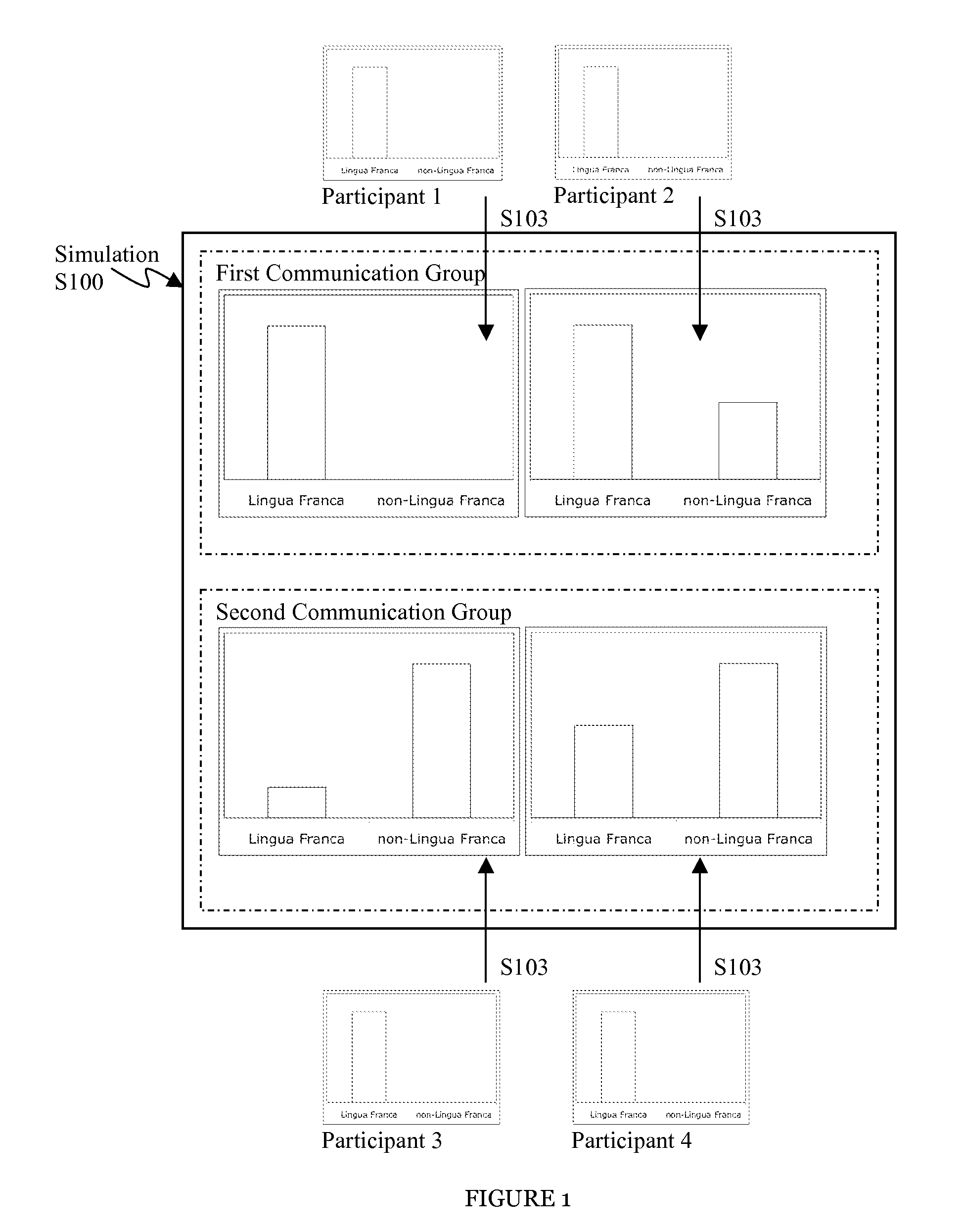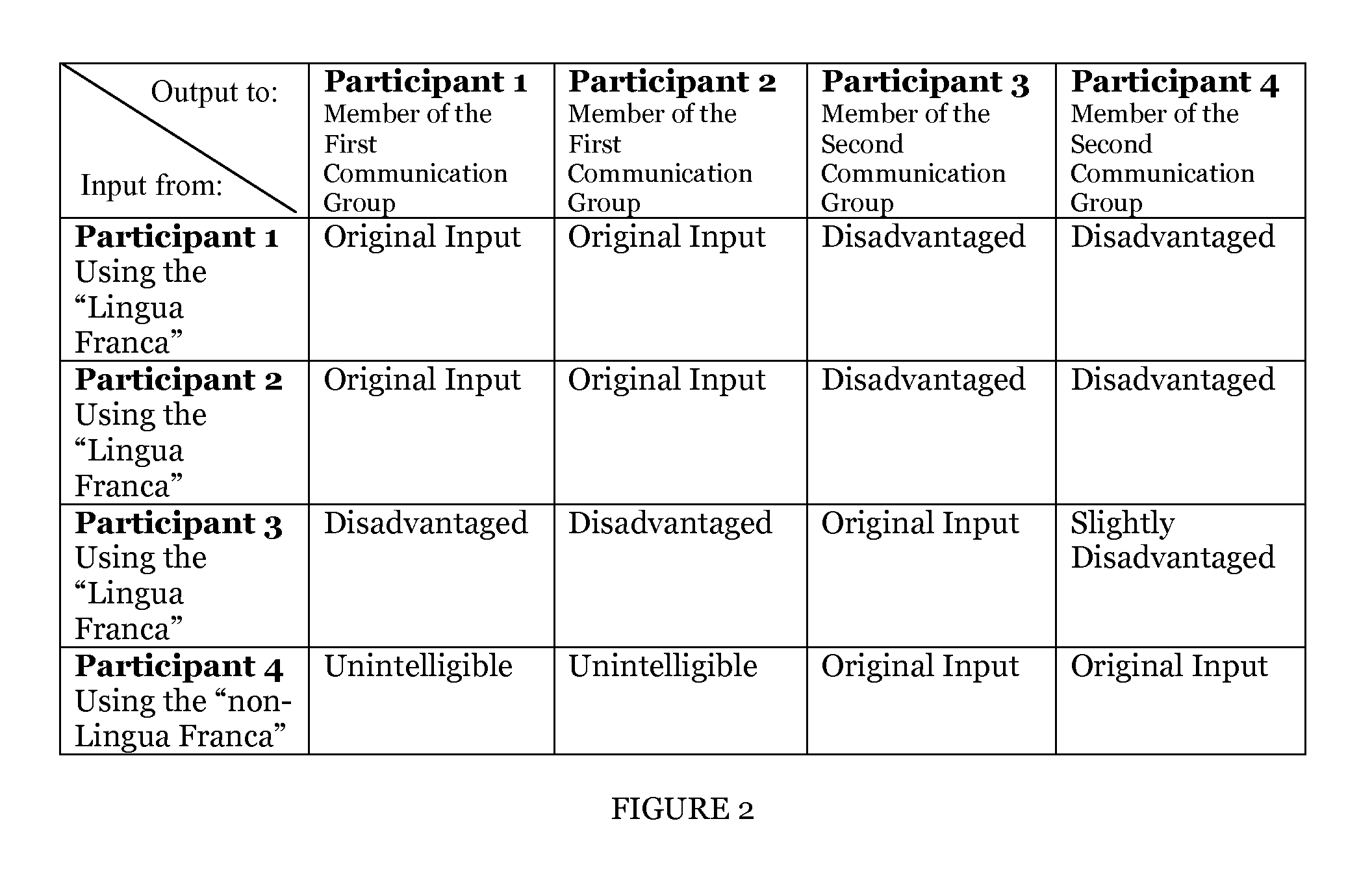Method and system for simulating a cross-cultural communication dynamic
a cross-cultural communication and dynamic technology, applied in the field of methods and systems for simulating cross-cultural communication dynamic, can solve the problems of difficult to comprehend the frustrations of a native a non-native speaker of a lingua franca, and achieve the effect of facilitating the understanding of emotions, facilitating communication, and increasing the desire of participants
- Summary
- Abstract
- Description
- Claims
- Application Information
AI Technical Summary
Benefits of technology
Problems solved by technology
Method used
Image
Examples
Embodiment Construction
[0015]As shown in FIGS. 1, 3a, 3b, and 3c, the method of simulating S100 of the preferred embodiments of the invention include the steps of assigning the participants to a first communication group that represents people for whom a lingua franca is a first language and to a second communication group that represents people for whom the lingua franca is a second language Step S103, providing a communication platform 110 that facilitates communication between the participants of the simulation to assemble unique subsets of an information set Step S105, and selectively disadvantaging the communication through the communication platform between a subset of the participants Step S107. As shown in FIG. 5, the method of simulating S100 of the preferred embodiments may also include the step of distributing unique subsets of the information set to the participants Step S101.
[0016]The method of simulating S100 of the preferred embodiments is preferably provided to participants with knowledge ...
PUM
 Login to View More
Login to View More Abstract
Description
Claims
Application Information
 Login to View More
Login to View More - R&D
- Intellectual Property
- Life Sciences
- Materials
- Tech Scout
- Unparalleled Data Quality
- Higher Quality Content
- 60% Fewer Hallucinations
Browse by: Latest US Patents, China's latest patents, Technical Efficacy Thesaurus, Application Domain, Technology Topic, Popular Technical Reports.
© 2025 PatSnap. All rights reserved.Legal|Privacy policy|Modern Slavery Act Transparency Statement|Sitemap|About US| Contact US: help@patsnap.com



